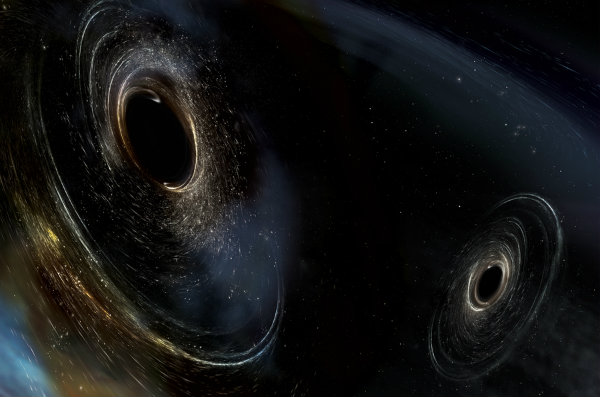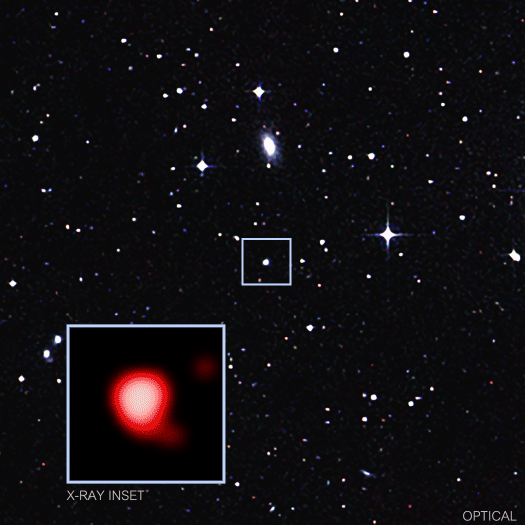60-Second Astro News: Black Hole Hubbub – SkyandTelescope.com
The Milky Way’s black hole flares unexpectedly, a distant black hole gets the hiccups, and a reanalysis of LIGO data shows the first black hole “ringdown.”
Milky Way’s Central Black Hole Brightens
Tuan Do (UCLA) and colleagues have caught an unprecedented boost in the glow coming from gas just outside our galaxy’s central black hole, Sgr A*.
The uptick appeared in infrared images taken this past spring with the Keck II Telescope on Maunakea, as part of the UCLA Galactic Center Group’s ongoing monitoring of Sgr A*. The increase is twice as bright as anything observed from the black hole since astronomers first detected variations in its light in 2003. Thus, it’s hard to reconcile as a random blip.
It might be that Sgr A* is chomping down on an extra helping of hot gas, perhaps dished up from its surroundings by the gravitational consequences of the star S2’s close pass in 2018, or by that of the dusty object G2 in 2014. The team continues to watch the black hole to see whether the increase in activity continues.
The result appears in the September 10th Astrophysical Journal Letters.
Astronomers “Hear” Early Chord of Black Hole Merger
A reanalysis of LIGO’s first detection of gravitational waves reveals that scientists can pick up the shudder in spacetime that follows a black hole merger.

Two black holes prepare to merge in this artist’s illustration.
<em?LIGO / Caltech / MIT / Aurore Simonnet(Sonoma State)
This shudder, called the ringdown, is like the dying vibration of a struck bell. Physicists had typically looked for the ringdown signal long after a merger, but graduate student Matthew Giesler (Caltech), Maximiliano Isi (MIT), and their colleagues discovered that the ringdown could be detected right away. The key, they found, is to look for overtones, like additional tones in the ringing bell.
Based on the ringdown and its overtones, the researchers calculated the black hole’s mass and spin. They confirmed that these two parameters encapsulate everything you need to know about an astrophysical black hole, an idea known as the no-hair theorem.
The team reports the results in upcoming articles in Physical Review Letters (preprint available here) and Physical Review X (preprint available here).
Distant Black Hole Has the Hiccups
X-ray observations of the center of distant galaxy GSN 069 have revealed semi-regular outbursts from the black hole there.

The black hole at the center of galaxy GSN 069 emits semi-regular X-ray flares (inset).
X-ray: NASA / CXO / CSIC-INTA / G.Miniutti et al.; Optical: DSS
In 2010 astronomers had noticed signs of a tidal disruption event, in which the black hole rends a star in twain. The X-ray glow from that event had been fading until Giovanni Miniutti (Center for Astrobiology, Spain) and colleagues caught a series of outbursts between December 2018 and February 2019. The observations show X-ray flares lasting about an hour and repeating about every nine hours.
Observers have only a handful of cases in which they’ve seen similar behavior from giant black holes. However, the team speculates September 11th in Nature that astronomers may have caught glimpses of this behavior on much longer timescales in other black holes and not recognized it. Why the hiccups happen remains unclear.





